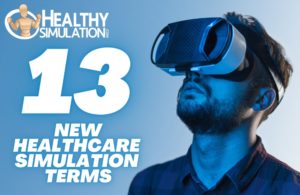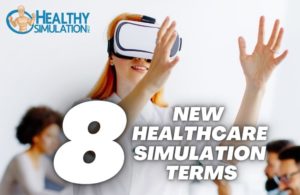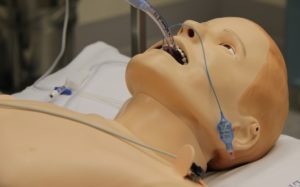Nursing Simulation Scenario
A Nursing Simulation Scenario is a clinical simulation event that replicates a nursing practice or situation. A nursing simulation scenario incorporates high-fidelity or mid-fidelity manikins, standardized participants (SPs), role-playing, skills stations, and critical thinking skills. The purpose of these scenarios in nursing education is to provide skills practice and real-life situations in a safe environment. The benefits of using nursing simulation scenarios in healthcare education are numerous. Common scenarios and available resources can help health simulation centers and their learners succeed.
Clinical simulation training is becoming more common for a variety of reasons. The number of undergraduate nursing programs has increased, leading to more competition for clinical placements. In acute care settings, the number of students has been restricted or the clinical activities student nurses are allowed to perform have been curtailed. However, simulation training transforms nursing education from conceptual to contextual, which is a benefit in the long run.
A 2010 survey done by the National Council of State Boards of Nursing (NCSBN) of prelicensure nursing programs revealed that 87% of those programs were using high-fidelity or medium-fidelity patient manikins. In 2014, a national study, also conducted by the NCSBN, found no statistical difference in clinical competency or comprehensive nursing knowledge in nursing students who had received full clinical training and students whose training was 25% or 50% replaced with simulation training.
Sponsored Content:
As a result, the NCSBN determined that nursing programs could substitute up to 50% of traditional clinical practice with simulation provided other factors were in place. These other factors include faculty members trained in simulation, an adequate number of faculty members to support student learners, subject matter experts, and equipment and supplies to create a realistic simulation environment.
Steps in a Simulation Scenario
In order to create and enact a simulation scenario a program needs to develop several components. These components do not vary much from scenario to scenario.
- Prebrief: A prebrief is a summary of the simulation scenario given to participants prior to the commencement of the scenario. Instructions and preparatory information are given to participants in order to facilitate the achievement of simulation objectives.
- Expected Outcomes: In healthcare simulation education, expected outcomes are the results of the actions the clinical simulation participants take. More than one outcome can be determined, for example, short-term and long-term outcomes. According to the INACSL Standards of Best Practice: SimulationSM Outcomes and Objectives (https://www.nursingsimulation.org/article/S1876-1399(16)30127-X/fulltext), outcomes are integral to the process of simulation education. Once outcome measures have been determined, objectives can be created.=
- Learning Objectives: The learning objectives of any given scenario are statements of what instructors intend or expect students to learn as a result of their instruction. The objectives are created by determining the kind of knowledge and cognitive processes instructors are seeking to address through the use of simulation.
- Scenario Setup: The scenario setup incorporates the type of room, supplies, and equipment needed; student, staff, and SP (if applicable) assignments; and facilitator notes.
- Scenario Commencement: As the name suggests, the scenario commencement is when the handoff report is given to participants, and the scenario begins.
- Debriefing: Debriefing is the period of time following an experiential learning activity, in this case a nursing simulation scenario, during which learners and instructors reflect, review, and discuss the activity. The goal of debriefing is to improve individual and team clinical skills and judgement.
Common Nursing Simulation Scenarios
Sponsored Content:
Alzheimer’s Teaching Strategies: The National League of Nursing (NLN) offers professional development programs that they call Advancing Care Excellence (ACE). The ACE.Z teaching strategies are targeted toward improving care for Alzheimer’s patients and caregivers. The nursing simulation scenarios in this competency program offer a range of situations to help students become more proficient in understanding Alzheimer’s dementia as a disease process and the care management implications.
COVID-19 Simulation Scenario: The number of COVID-19 healthcare education scenarios proliferated quickly during the pandemic. Healthy Simulation offers a comprehensive list of resources for simulated clinical experiences (SCEs) for suspected COVID-19 exposure, including those from CAE, EMSim Cases, the WHO, and the CDC.
Health Clinic Patient Follow-Up (Diabetic Patient): Student learners are caring for a 63-year-old male who is receiving follow-up care to manage his Type 1 diabetes. The learning objectives are for nursing students to quickly recognize and distinguish between clinical manifestations of hyperglycemia and hypoglycemia, identify the possible causes, initiate assessments and interventions, and provide patient instruction for out-of-the-hospital self care.
Med-Surg Nursing: Sepsis Scenario: In this scenario, the patient is a 32-year-old female who has undergone a laparoscopic hemicolectomy. The objective is for participants to recognize the early signs of sepsis and initiate the steps of a sepsis bundle. Participants should also be prepared to demonstrate BLS skills.
The target participants are medical-surgical nurses and staff. An SP can be used for the early part of the healthcare simulation; if BLS skills need to be demonstrated, students can switch to a high-fidelity manikin to practice CPR. The facilitator of this nursing simulation can provide vital sign information and also compress (speed up) the timeline as needed. Several types of scenarios can be found at MedPro.com; a sepsis scenario is a common clinical situation that nurses need to prepare for. Here’s another scenario from MedPro.com.
Nursing Simulation Scenario Assessment Physical Assessment: This is a video from Montgomery College that shows a nursing student interacting with a high-fidelity manikin and an SP who is in the role of the patient’s son. The patient has been admitted to the hospital because he has had several days of nausea and vomiting; he is a cancer patient undergoing chemo. In this scenario, the doctor hands off the patient, and the student needs to complete the patient’s intake assessment.
The learning objectives include patient-caregiver communication skills as well as taking vitals and assessing a patient’s pain. Recording a healthcare simulation is a good way to assess and debrief the simulation scenario, and these types of recordings can be shared for further training.
Obstetrics Simulation Scenario: Shoulder Dystocia: In this scenario, an OB provider and OB nurses encounter shoulder dystocia when delivering a 39-week-old baby; the mother has been in labor for 12 hours. The purpose of the nursing simulation is to practice effective communication and efficient teamwork.
This simulation scenario encourages participants and facilitators to employ TeamSTEPPS, which is an evidenced-based teamwork system. TeamSTEPPS tools include: brief, situation awareness, cross-monitoring, CUS, and the two-challenge rule. The long-term expected outcome is that the participants can demonstrate improved patient outcomes for any type of obstetrical complication.
References:
- NCSBN Simulation Guidelines for Prelicensure Nursing Education Programs
- International Nursing Association for Clinical Simulation and Learning (INACSL) Standards of Best Practice: Simulation
- Society for Simulation in Healthcare standards
Nursing Simulation Scenario Education Latest News

13 Medical Simulation Keywords You Need to Know About

8 Medical Simulation Keywords You Need to Know About

Free Medical Simulation Scenarios
Sponsored Content:














